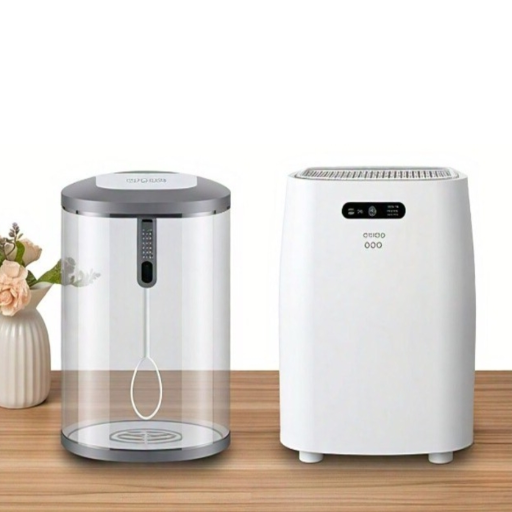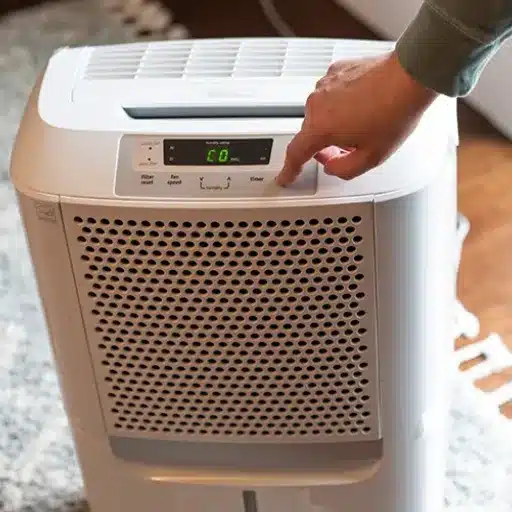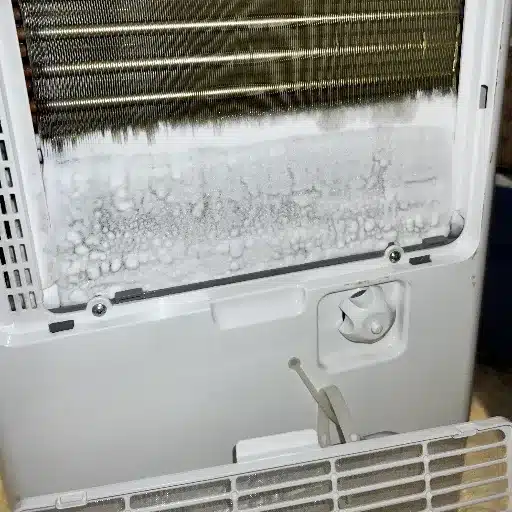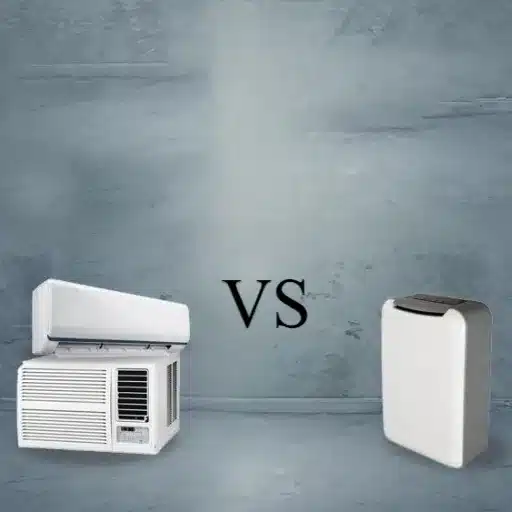When it comes to improving indoor air quality and managing allergy symptoms, choosing the right device can feel overwhelming. Two popular solutions—air purifiers and dehumidifiers—are often recommended, but which one is truly the best for addressing your specific needs? Each of these devices serves a unique purpose and tackles different aspects of air quality and allergen control. This article will break down the key differences, benefits, and ideal use cases for both air purifiers and dehumidifiers, helping you make an informed choice to create a healthier, more comfortable living environment. Whether you’re aiming to reduce airborne allergens, control humidity levels, or both, understanding how these technologies work is essential for optimizing your home’s air quality.
What is an Air Purifier and How Does it Work?
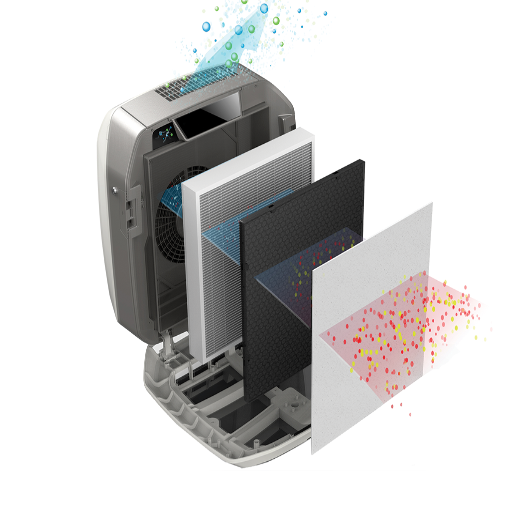
Understanding the Function of an Air Purifier
An air purifier is defined as a machine or appliance whose purpose is to eradicate air contaminants and enhance the quality of air inside a building by removing such elements as particles and pollutants from the air. As it works, it pulls air and passes it through a filter that can capture several harmful particles like dust, pollen, pet dander, mold spores, and even smoke. Also, air purifiers have various models that can remove odors and even microscopic bacteria or viruses that make a home or building healthier to live in.
Every air purifier, regardless of the make or model, has the same core function. The filters are one of the core functions. Traditionally, every air purifier has a pre-filter that captures bigger particles such as hair and dust, a HEPA (high efficiency particulate air) filter, and an activated carbon filter. An air purifier’s HEPA filter captures smaller airborne particles that measure as low as 0.3 microns, such as allergens or even fine dust. The efficiency of these filters measures 99.97%. Lastly, an absorbent activated carbon filter that removes gas and other smells or organic compounds (VOCs) adds to the air’s cleanliness chemically.
Certain sophisticated air purifiers use other methods of disinfection or neutralization of airborne pathogenic microorganisms with the employment of UV light or ionizers. If used rationally, these air purifiers can mitigate the dangers to health emanating from contaminated air, especially for those suffering from respiratory diseases or for those who are sensitive to different kinds of allergens. Air purifiers should be set according to the air concerns, room size, filtration technology, and other specific issues in order to achieve the best results. They also require other forms of maintenance, such as cleaning or replacement of filters, to sustain efficiency over long periods.
How Air Purifiers Can Help Improve Your Indoor Air Quality
By eliminating dust, pollen, pet dander, and mold spores, air purifiers are essential in improving the quality of air indoors. They help alleviate allergies or asthma-related respiratory problems by decreasing exposure to irritants. Air purifiers using high-efficiency particulate air (HEPA) filters can provide cleaner air by capturing 0.3-micron particles and smaller with high accuracy.
Advanced models of air purifiers tackle more than just particulates to improve indoor air quality. Many incorporate activated carbon filters, which effectively reduce odors and volatile organic compounds (VOCs). These filters also eliminate dangerous gases released from common household materials and products. Some models even use ionizers or UV-C light to neutralize viruses and bacteria that pose health threats in crowded areas.
To achieve the best results, focus on an air purifier that targets the pollutants present and matches the room’s dimensions. Optimal placement is necessary, too, with central locations providing unobstructed airflow, yielding the best outcomes. Performance and long-term air quality benefits are guaranteed through consistent maintenance, like replacing filters as suggested by manufacturers.
Common Airborne Particles Removed by Air Purifiers
The purpose of air purifiers is to eliminate various airborne particles that contribute to indoor pollution. One of the specific concerns is particulate matter (PM), which includes dust, pollen, pet dander, PM10, and PM2.5. Since these are common infectious agents, air purifiers that target these particles will enable those suffering from respiratory diseases and allergies to breathe in a healthier environment, instrumental for their recovery.
Moreover, air purifiers capture microscopic pathogens, including some bacteria and viruses. A lot of air purifiers use High Efficiency Particulate Air (HEPA) filters, which are able to capture 99.97% of airborne particles labeled 0.3 microns. This is very important in helping reduce the risk of harmful microorganisms in the air within spaces occupied by people with low immunity.
Household products, cooking, and even tobacco give off Volatile Organic Compounds (VOCs) and bad smells, which air purifiers possess the ability to filter out using activated carbon filters. These Air Purifiers Chemically Filter Out Gases By Adsorbing Them To Cleaner Surfaces. Overall, the use of these Air Purifiers leads to a decrease in indoor pollution and an increase in pollution-free air.
What is a Dehumidifier and How Does it Work?
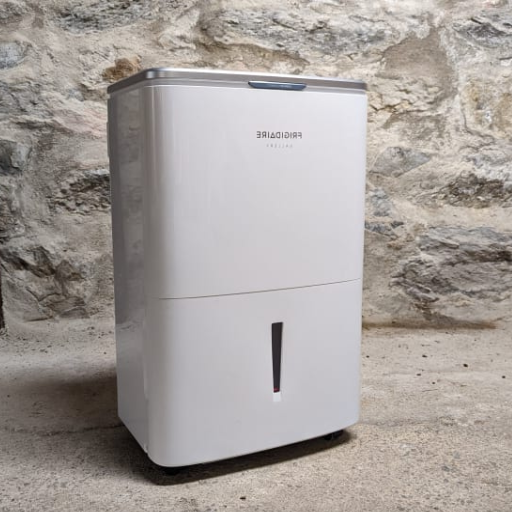
The Role of a Dehumidifier in Reducing Humidity Levels
A dehumidifier is a device meant to reduce excessive humidity present indoors to enhance comfort and avoid moisture-related challenges. Dehumidifiers remove moisture from the air, which helps maintain optimal relative humidity levels that are usually recommended to be between 30-50 percent for healthy indoor conditions. The effects of high humidity can also negatively impact comfort as well as encourage the growth of mold, mildew, and dust mites that can result in health complications and even damage structures.
- Preventing the development of mold and mildew: If indoor humidity levels are greater than 60%, the chances of mold and mildew growth are very high. Dehumidifiers will intervene by reducing moisture content and hindering the growth of such detrimental fungi, and also protect structural parts like walls and ceilings, which would normally be damaged.
- Improved air quality: The growth of airborne allergens like dust mites that tend to worsen asthma and allergies is aided by excessive moisture. The removal of these allergens improves indoor air quality and makes use of a dehumidifier.
- The protection of household items: Sensitive materials like wood, paper, and even and leather can be damaged by high moisture content. Dehumidifiers protect furniture, clothing, and documents from damp conditions that would eventually lead to rotting, warping, or deterioration.
- Energy Efficiency Support: The cooling efficiency of air conditioning systems is enhanced by lower levels of humidity. Air conditioners consume less energy, operate at a lower cost, and have a reduced workload due to the integration of HVAC systems with dehumidifiers.
- Enhanced Comfort Levels: Indoor spaces can feel clammy and excessively warm due to high humidity levels. Even in warm and humid regions, dehumidifiers maintain moisture levels which improve overall comfort thereby increasing comfort levels.
Dehumidifiers not only promote healthier living spaces by controlling these issues, but also enhance comfort, preserve and protect the building, its contents, and enhance durability. The usability of such systems enables them to grade as effective climate control systems for indoor use in buildings spanning residential and commercial applications.
How Dehumidifiers Can Help Prevent Mold Growth
Within a facility, mold can easily proliferate if the relative humidity level is greater than 60%. A dehumidifier reduces the humidity level within this range to 30%-50%. Consequently, aiding in mold prevention. At the same time, preventing exothermic reactions from weakening the lungs, developed from spores that can lead to respiratory problems or allergic reactions.
Spraying water into the air and subsequently cooling the environment can aid in removing air moisture. This can be achieved using a dehumidifier that sucks warm, moist air and sends it through cooling coils, where it gets turned into vapor. The addition of heat results in air getting rid of excess moisture, which is returned to the room. With such moisture control, mold, spores, and other allergens do not spread and thrive.
Research has shown that dehumidification systems are effective in combating the formation of mold in basements, kitchens, and bathrooms. For instance, an EPA report underlines the importance of moisture control as one of the dominant strategies for fighting mold. Furthermore, contemporary dehumidifiers come with real-time humidity level monitoring sensors that greatly enhance their operation.
With the incorporation of dehumidifiers into the indoor climate control architecture, property owners stand to gain not only from averting the expensive destruction associated with mold infestation but also from improved health in the affected living or working space.
Benefits of Using a Dehumidifier for Allergy Relief
People sensitive to allergens often find it difficult to breathe smoothly due to poor indoor air quality. Dehumidifiers lower humidity, which directly harms mold reproduction and drastically improves dust mite prevalence. This results in better health and reduced allergic reactions. Below are five key advantages of using a dehumidifier for allergy relief:
- Decrease of Dust Mite Population: Research indicates that the majority of dust mites tend to inhabit spaces containing humidity greater than 50%. According to many studies, controlling and curtailing humidity results in almost 50% decrease in crawling dust mites. Dehumidifiers actively control humidity at the optimal range of 30-50%, which helps inhibit the survival of dust mites, therefore improving respiratory conditions such as asthma.
- Prevention of Mold and Mildew Growth: Dehumidifiers can control mold spores, their prime environment and breeding ground being damp areas. By controlling moisture, dehumidifiers accordingly eliminate visible mold growth on walls and carpets while simultaneously preventing mold spores from circulating in drier air, which leads to improved air quality.
- Lower Indoor Pollen Concentration: Although pollen is considered an outdoor allergen, it can easily be brought inside via openings like windows, clothing, or HVAC systems. Pollen allergens are compounded by high humidity, which causes particles to adhere to surfaces and stay suspended in the air. Using a dehumidifier to reduce relative humidity helps decrease the concentration and distribution of these allergens indoors.
- Improved Airborne Particulate Filtration Efficacy: Most dehumidifiers come integrated with air purifiers that remove suspended particles. The lower humidity environment improves the performance of filtration systems by capturing allergens such as dander, mold spores, and dust more efficiently. Dry air settings have been shown to have 20-30% improvement in filtration performance.
- Enhances Comfort in the Respiratory System: Increased humidity tends to exacerbate the severity of allergic symptoms like nasal congestion and shortness of breath. The use of dehumidifiers helps to balance the indoor humidity, which relieves symptoms and leads to comfortable breathing in the home environment, as clinical studies on the effects of climate control have shown.
Due to all these factors, dehumidifiers strive towards minimizing allergens while supporting health improvements. For individuals who have allergies, using a dehumidifier is one of the scientifically proven methods for achieving a better quality of life and comfort within their home.
Air Purifier vs Dehumidifier: Which is More Effective for Allergies?
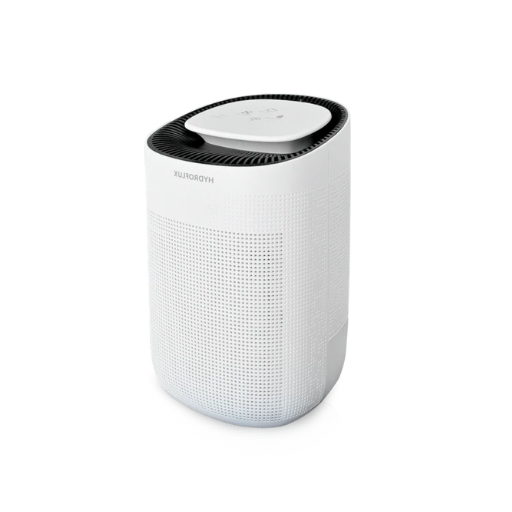
Comparing Air Purifiers and Dehumidifiers in Allergen Removal
While dehumidifiers mitigate humidity levels to stop mold and dust mites, air purifiers eliminate airborne allergens such as dust and pollen.
| Aspect | Air Purifier | Dehumidifier |
|---|---|---|
|
Purpose |
Removes allergens |
Controls humidity |
|
Focus |
Airborne particles |
Moisture levels |
|
Ideal For |
Dry environments |
Damp spaces |
|
Technology |
HEPA, carbon |
Compressor |
|
Power Use |
Efficient |
Moderate |
|
Sound |
Quiet operation |
Noticeable hum |
|
Upkeep |
Replace filters |
Drain water |
|
Range |
Room-specific |
Larger areas |
How Each Device Affects Air Quality in Your Home
Dehumidifiers and air purifiers serve different purposes, but both contribute greatly to the quality of indoor air. An air purifier aims at capturing allergens like pollen, pet dander, dust mites, and even some bacteria and viruses, which are all microscopic and airborne. To achieve this, they make use of advanced technologies like HEPA (High Efficiency Particulate Air) filters, activated carbon, or UV-C light. Moreover, Air purifiers are very useful in lowering PM2.5 and PM10, which refers to particulate matter that is used to determine air quality standards.
Unlike air purifiers, dehumidifiers remove moisture from the air, therefore lowering the humidity indoors. Excess humidity (over 50-60%) can foster the growth of dust mites, mold, and mildew, which are all indoor allergens. By upholding an optimal level of relative humidity ranging from 30-50%, dehumidifiers mitigate these allergens.
While air purifiers are highly effective at removing microscopic airborne pollution, dehumidifiers modify the environmental factors in which these allergens thrive. Both conveniently work hand in hand, while air purifiers excel at providing instant results by improving air quality, and dehumidifiers ensure sustainable, long-lasting conditions. For homeowner who value their health, the combination of these devices allows for optimal mitigation of allergens.
Choosing Between an Air Purifier and a Dehumidifier for Allergy Relief
Assessing the specific triggers and conditions within your home is key when deciding whether to use an air purifier or a dehumidifier for your allergies. An air purifier works by extracting particulate allergens from the air, including dust, pollen, pet dander, and smoke, using ion HEPA filters, activated carbon, or even UV-C light. Research shows that air purifiers can reduce airborne allergens by up to 99%, depending on the efficiency of the filtration system used and the size of the room.
Conversely, dehumidifiers address humidity-related allergens like mold and dust mites. Research indicates that maintaining indoor humidity between 30% and 50% stunts the growth of mold spores and severely limits the reproduction of dust mites, as these allergens prefer damp environments. Dehumidifiers function by eliminating excess moisture from the air, making the environment less hospitable to these allergens.
For cases where people are sensitive to allergens related to particles as well as humidity, using both machines together seems to provide all-around control of indoor air pollution. Knowing the allergic profile and the environmental challenges specific to your home can help you decide on the use or combination of these devices to relieve you of the allergies efficiently.
Can You Use Both an Air Purifier and a Dehumidifier Together?
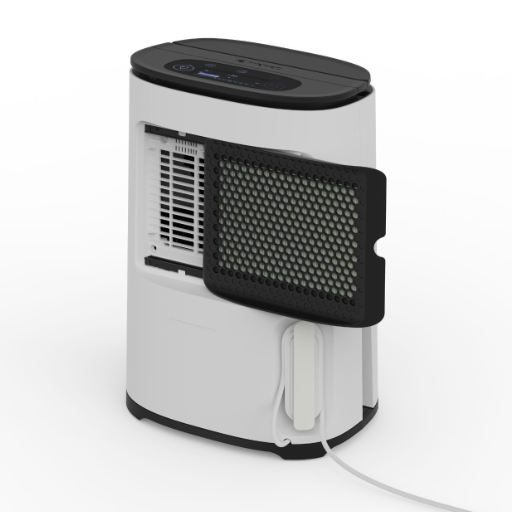
The Benefits of Combining Air Purifiers and Dehumidifiers
Using an air purifier and a dehumidifier together in the same room creates a more synergistic effect for indoor air quality, temperature control, and comfort. Each device works on a different aspect of the surrounding space, optimizing its use for health and air management. Here are five of the most important benefits of using both devices at the same time:
- Improved Allergen Reduction: Air purifiers are great for getting rid of allergens floating in the air, like pollen, dust mites, and pet dander, with their HEPA filters. In addition, dehumidifiers fight against excess humidity, which helps mold and dust mites thrive. The combination creates a harsh cleaner for allergens and allergen-inducing elements.
- Mold Growth Prevention and Eradication: High humidity can also lead to mold growing on walls, ceilings, and other surfaces. A dehumidifier reduces humidity in the air to 50% or lower. In addition, using air purifiers with mold filters helps remove and capture mold spores from the air. The combination helps with all aspects of mold: containment, growth prevention, and propagation.
- Enhanced Respiratory Health: Dimensions such as volatile organic compounds (VOCs), particulate matter, and even certain microbial organisms can worsen chronic respiratory problems if they are inhaled. Medical-grade air purifiers filter out these contaminants while dehumidifiers eliminate water that bacteria and viruses feed on, thereby reducing the chances of respiratory infection or irritation.
- Elimination of Stale Odor Control: Foul smells and stale air, which are the results of damp places, can effectively be controlled using this combination. The dehumidifier expels needless moisture that causes odors, while the air purifier gets rid of mold and mildew-infested particles and VOCs that pollute the air, enabling everyone to breathe clean air.
- Energy-efficient Climate Control: Managing humidity levels by using a dehumidifier will help an HVAC system run smoothly because dry air is easier to cool. Together with an air filter that gets rid of airborne particulates, the indoor environment is more wholesome, enabling healthier living. The air provided becomes fresh as well as good for health, surging hope for lower bills.
Not only does this enable one to breathe fresh air, but also to have a relaxing and hygienic home. Having all these devices in one is a great relief for homes that suffer from a myriad of air quality problems.
How to Optimize Indoor Air Quality with Both Devices
The use of both air purifiers and air conditioning systems can comprehensively target several parameters and effectively improve indoor air quality. To start off, choose air purifiers with HEPA filters, which can extract 99.97% of contaminants, such as dust, pollen, and even dangerous microorganisms. To maximize plug coverage and air circulation with the vent, place the purifier close to high-activity areas or HVAC vents.
In conjunction with the above, remember that the air conditioning system requires routine servicing, as clean HVAC units are crucial in preventing dirt and allergens from getting recirculated. Advanced filtration systems are also important; use ECONO-Grade HVAC filters with MERV ratings between 8-13 that will not strain the system. A smart thermostat can be useful for precise energy temperature setting, enhancing air quality, and energy efficiency.
For precision, follow manufacturer guidelines to improve the reliability of both systems and routinely change device filters. Maintaining humidity within 30-50% helps mitigate mold development and other respiratory irritants. If controlling humidity levels proves difficult, consider installing an AC-integrated dehumidifier.
Finally, using information from air quality monitoring systems gives instant updates on pollution levels, which makes it possible to automatically adjust the settings on purifiers and ACs. Air quality is controlled when provided with a system that combines preventative maintenance, advanced filtration technologies, and smart monitoring, which creates a healthier living environment.
Potential Challenges When Using a Dehumidifier and an Air Purifier Simultaneously
Using a dehumidifier and an air cleaner at the same time brings about a number of practical and technical difficulties. One particular area of concern is power usage. Cypress, along with both appliances, tends to utilize high energy, and using them together could even increase electricity costs due to consumption because operating them both may lead to additional energy expenses. This situation can worsen, for instance, in locations where power-saving technologies are favored or in cases of extended use.
Another area of concern is the circulation of air. A dehumidifier removes moisture from the air by drawing in wet air, extracting humidity from it, and blowing out dry air. Air purifiers, however, focus on filtering allergens and pollutants while letting air flow through. Accessories that are positioned too close together affect their intake and outflow dynamics, making them less effective in service. For example, dehumidifiers may introduce airs that render air distribution and air cleaning less smooth to result in unevenly distributed clean air.
Environmental factors can impact the device’s shortcomings. In a context or for instance, regions with high levels of humidity, dehumidifiers might transform energy into heat, which may affect the work done by the air cleaner. This adds additional monitoring work for the user to track, particularly in enclosed or smaller spaces.
Finally, overlapping systems on maintenance can make routine upkeep more difficult. Both machines operate with filters, however, their feed procedures differ in both filter type and frequency of filter upkeep. Failure to plan carefully increases the chances of reduced performance due to a clogged filter, which defeats the purpose of effective air quality improvements. Strategically placed and efficiently controlled devices, along with thoughtful energy expenditure and dedicated maintenance schedules, ensure that ambiguous auxiliary issues do not hinder optimal equipment operation.
How to Choose the Right Device for Your Indoor Needs
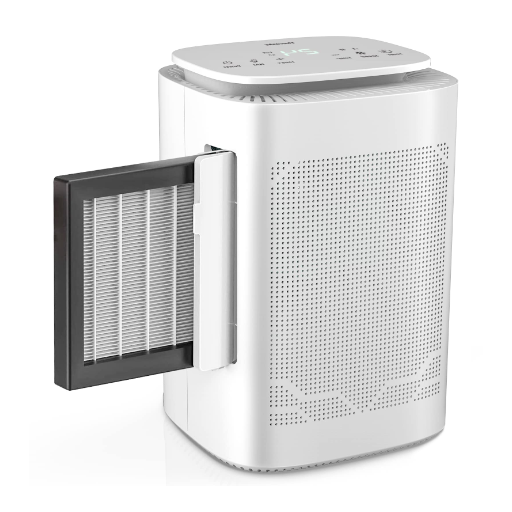
Factors to Consider When Selecting Air Purifiers vs Dehumidifiers
In making the choice of spending on an air purifier, dehumidifier, or both, several critical factors need to be evaluated to maximize their benefits in your indoor environment.
- Primary Objective: Air purifiers focus on removing particulates from the air, like dust, allergens, and pollutants; air sterilizers focus on reducing the humidity in the air. If your main concern is mostly related to alleviating breathing problems caused by allergens, the most appropriate item to go with would be air purifiers. If, on the other hand, you wish to solve issues concerning moist and damp conditions, which could further support mold growth, the best route is to go for a dehumidifier.
- Room Size and Capacity: The effectiveness of these devices also relies on their ability to manage all the devices, depending on their size. In the case of air purifiers, you have to check the Clean Air Delivery Rate (CADR), which depicts the amount of air that is cleaned in a minute. Moisture extraction depends on the pint capacity of the dehumidifier units per day. Make sure that the specifications of the devices match the square footage and volume of the target region.
- Environmental conditions: The climate, ranging from cold to humid, will determine the use of humidifiers or dehumidifiers to ensure a comfortable and healthy environment free of molds. Most urban areas or highly populated zones require the use of strong air purifers that come with HEPA filters to suck out harmful particles such as PM2.5 or VOCs.
- Energy efficiency: The use of energy in both devices should be considered carefully, as prolonged usage can spike utility bills a great deal.
- Noise levels: For the devices used in the bedroom, office, or living room, consideration of the noise emitted is very important. Air purifiers have ‘quiet’ nighttime settings, while most dehumidifiers tend to be louder due to their compressors. It is crucial to check the decibel ratings of the devices prior to purchase so as to make a purchase quiet enough.
- Maintenance requirements: Air purifiers need to have their filters changed once in a while. The carbon and HEPA filters need to be replaced every couple of months, whilst the more expensive filters would last a full year. Other tasks needed to be done include cleaning out the water reservoir from dust and ensuring the condenser coils remain free from dirt. Taking into account these maintenance chores helps in achieving great consistency along with performance.
- Budget and Long-Term Costs: In addition to the purchase price, evaluate the cost of operating air purifiers and filters, as well as the energy expenditure for dehumidifiers. Some devices combining air purification and dehumidification functions may offer an effective solution, although this may require higher initial costs.
A detailed analysis of these factors makes it possible to select a device or system that meets your predefined targets regarding the quality of air indoors and environmental control. This level of detail guarantees maximum efficiency and comfort while minimizing costs and operational expenditure.
Understanding Moisture Levels in the Air and Airborne Concerns
Comfort and overall effectiveness of designed spaces are influenced greatly by moisture factors, often controlled as indoor relative humidity (RH), with ideal ranges sitting between 30% to 50%. Outside of that range, adverse effects may result. Increased humidity aids in the growth of mold, dust mites, and other allergens, which affect both hygiene and the health of individuals in the residing space (IAQ). Concerns caused by too little moisture include irritation of the respiratory organs, dry skin, and even an increase in infection due to exposed Ella’s tissues no longer being protected by mucus, which results in the inflammation of tissues.
Monitoring the relative humidity changes using hygrometers measures the usefulness of humidors and dehumidors. Coupling them with state-of-the-art control humidistats allows for instantaneous responses to environmental changes, enhancing space control. Advanced technologies are often used in such systems, which process and modulate air effectively, including desiccant dehumidifiers, vapor absorption processes, and thermal dehumidification cycles.
Control of airborne PM and VOC, as well as microbial contaminants, in conjunction with humidity monitoring, provides a holistic check on IAQ. Proactive tackling of monitored data through predictive AI-enabled health compliance works ensures that the safety of the structure’s occupants is maintained, together with predefined health guidelines, and meeting the set policies and objectives.
Evaluating Features of the Latest Air Purifiers on the Market
The most recent air purifiers available in the market today use modern technologies aimed at improving indoor air quality (IAQ) through highly accurate and efficient methods. Multi-stage filtration systems like HEPA and ULPA filters are being used nowadays, which eliminate pollen, dust, mold spores, and other microscopic contaminants by capturing particles as small as 0.1 microns. Many models now have incorporated activated carbon filters, which enhance the ability of these purifiers to eliminate harmful gases and volatile organic compounds (VOCs).
Newer air purifiers also incorporate real-time monitoring of air quality using integrated sensors that can detect PM2.5, PM10, and even certain VOCs. In addition to purification adjusting in real-time to prevailing conditions, data is usually transmitted to companion mobile applications or smart homes for advanced control and monitoring. More advanced models now use UV-C radiation and photocatalytic oxidation to sterilize microbes, minimizing the transmission of bacteria, viruses, and fungal spores.
Furthermore, features like sound masking technology, quiet or turbo modes, and adjustable functioning parameters improve silence and adaptability to different environments. Predictive modifications using AI (artificial intelligence) based on past air quality data, user actions, and habits can be found in some high-end models. All these improvements together show the great efforts made in the development of air purification systems technology in regard to their efficiency and practicality.
References
-
Renewable and Rechargeable Powered Air Purifier and Humidifier: A Review – Discusses the integration of air purifiers and dehumidifiers in renewable systems.
-
A pilot study on combined dehumidification and HEPA filtration effects – Examines the impact of dehumidification and HEPA filtration on mold and allergens.
-
Evaluating portable air cleaner removal efficiencies for bioaerosols – Focuses on the efficiency of air purifiers in removing bioaerosols.
Frequently Asked Questions (FAQ)
Q: What’s the difference between air purifiers and dehumidifiers?
A: Air purifiers remove contaminants from the air, such as dust mites and mold, by using filters to capture airborne particles. Dehumidifiers work by reducing moisture in the air, which can help reduce mold growth and condensation, especially if you live in a humid climate.
Q: How do air purifiers help with allergy relief?
A: Air purifiers help by removing allergens in your home, such as dust, pollen, and smoke particles. By filtering air and removing airborne particles, an air purifier can improve the air quality and reduce the symptoms for those who suffer from allergies.
Q: Can dehumidifiers improve the overall air quality in your home?
A: While dehumidifiers primarily focus on reducing moisture in the air, they can indirectly improve the overall air quality by minimizing the conditions that promote dust mites and mold growth, which are common allergens.
Q: Do air purifiers remove smoke particles effectively?
A: Yes, air purifiers remove smoke particles effectively. They filter air using HEPA filters and activated carbon filters, which capture and neutralize smoke and other contaminants from the air.
Q: Are dehumidifiers and air purifiers equally effective in reducing allergens in your home?
A: Air purifiers are generally more effective in directly reducing allergens because they are designed to filter and remove airborne particles. Dehumidifiers help by controlling humidity in your home, which can reduce the presence of allergens indirectly.
Q: How do dehumidifiers work in a humid climate?
A: Dehumidifiers work by drawing humid air over a cold coil, causing the moisture to condense and collect as water vapor, effectively removing moisture from the air. This is particularly beneficial in a humid climate where reducing air humidity can prevent mold and allergens.
Q: Can using both devices together improve the air quality in your home?
A: Yes, using both an air purifier and a dehumidifier can improve the air quality in your home significantly. An air purifier can remove airborne contaminants while a dehumidifier controls the moisture level, creating an environment less conducive to allergens.
Q: Does an air purifier release clean air back into your home?
A: Yes, after filtering contaminants from the air, an air purifier releases clean air back into your home, improving air quality and reducing potential allergens.
Q: Should people with asthma and immunology concerns use an air purifier or a dehumidifier?
A: People with asthma and immunology concerns may benefit more from using an air purifier, as it specifically targets and removes airborne allergens and pollutants that can trigger symptoms.

